Web 3.0 and Social Business—2011 Predictions and Recommendations describes a turning point, away from social media to social business. SocialTech Grows Up—Relationship the Foundation of Business Success—Digital Clodhoppers Become Sore Thumbs.
 2011 will mark a turning point in the adoption of digital social technologies because the experimentation phase is drawing to a close, and stakeholder expectations are increasing. Organizations and people will no longer gain attention by executing badly. At the enterprise level, participation will wane in venues and initiatives that have no business strategy, focus, content strategy and commitment. Paying inexperienced people or agencies to “share” snappy content will expose brands as digital clodhoppers and push customers away. Individuals will also have to improve their game and focus on the most relevant people in their networks. Stop sending default invitations on LinkedIn. Proactively support people whom you respect and trust the most. The theme is determining and executing on strategy, focus and commitment.
2011 will mark a turning point in the adoption of digital social technologies because the experimentation phase is drawing to a close, and stakeholder expectations are increasing. Organizations and people will no longer gain attention by executing badly. At the enterprise level, participation will wane in venues and initiatives that have no business strategy, focus, content strategy and commitment. Paying inexperienced people or agencies to “share” snappy content will expose brands as digital clodhoppers and push customers away. Individuals will also have to improve their game and focus on the most relevant people in their networks. Stop sending default invitations on LinkedIn. Proactively support people whom you respect and trust the most. The theme is determining and executing on strategy, focus and commitment.
In 2011, the bar to attract and hold attention will be higher, which will present organizations with a new threat: when participation falls, some executives will conclude that “social media” was only hype anyway, and they will curtail investments. This reaction will create opportunity for people who understand what works and why. At the same time, stakeholders are more savvy and responsive when you show sincere interest in them, which will result in stronger relationships and business results when your interactions are based on a sound strategy.
In 2011, there will be few opportunities to make any impact by using a casual approach, so our focus here is to lay out predictions that will form the context for this year’s opportunities and threats relative to social business. From there, I’ll build my 2011 recommendations for enterprises and individual executives. By the way, this follows the Year in Review—2010/Initial Glimmers of Social Business.
2011 Predictions
 The Economy will continue to improve, but it won’t feel like a recovery for most people, and there is still considerable risk of a major disruption—The United States and Japan are being threatened by ratings agencies due to their “unsustainable” debt levels, and both have aging populations and concomitant looming health care costs. Japan has never really recovered from its property-sparked “lost decade” during the 1990s, and the U.S. has tried to buy its way out of its own financial debacle since 2007. And Europe is far from a safe haven. The European Central Bank and major members struggled in 2010 to alleviate pressure on the Euro, and some economists wondered whether the currency would even survive. The U.S. Dollar is being questioned as a reserve currency. As 2011 begins, it appears that many of the acute financial uncertainties have been patched up, although most G8 economies’ finances are seriously weak and vulnerable to exogenous shocks of which there is no shortage of candidates. Financial institutions, automakers, airlines and consumer goods firms will be bought on the cheap, as enterprises flush with cash remove competitors and production capacity. The list of mainstream media brands will continue to behave like a Peanuts spelling bee. This will keep the employment picture cloudy and uncertain for many people. “Austerity” will be the watchword for the G8 for much of this decade as governments admit their people will have to lower their expectations. Although I’m not predicting it, I wouldn’t be surprised if there were a serious challenge to executive salaries in countries with large wealth disparities. Social technology could be an enabler. This is an environment in which enterprises, executives and countries can protect themselves by maintaining flexibility: it’s a good time to question assumptions (i.e. knee-jerk U.S. Dollar reserve currency) and to diversify investments.
The Economy will continue to improve, but it won’t feel like a recovery for most people, and there is still considerable risk of a major disruption—The United States and Japan are being threatened by ratings agencies due to their “unsustainable” debt levels, and both have aging populations and concomitant looming health care costs. Japan has never really recovered from its property-sparked “lost decade” during the 1990s, and the U.S. has tried to buy its way out of its own financial debacle since 2007. And Europe is far from a safe haven. The European Central Bank and major members struggled in 2010 to alleviate pressure on the Euro, and some economists wondered whether the currency would even survive. The U.S. Dollar is being questioned as a reserve currency. As 2011 begins, it appears that many of the acute financial uncertainties have been patched up, although most G8 economies’ finances are seriously weak and vulnerable to exogenous shocks of which there is no shortage of candidates. Financial institutions, automakers, airlines and consumer goods firms will be bought on the cheap, as enterprises flush with cash remove competitors and production capacity. The list of mainstream media brands will continue to behave like a Peanuts spelling bee. This will keep the employment picture cloudy and uncertain for many people. “Austerity” will be the watchword for the G8 for much of this decade as governments admit their people will have to lower their expectations. Although I’m not predicting it, I wouldn’t be surprised if there were a serious challenge to executive salaries in countries with large wealth disparities. Social technology could be an enabler. This is an environment in which enterprises, executives and countries can protect themselves by maintaining flexibility: it’s a good time to question assumptions (i.e. knee-jerk U.S. Dollar reserve currency) and to diversify investments. Employment will not recover in 2011, but executives can increase security by changing their approach—At the individual level, people can improve themselves along cost and revenue vectors: by scaling back consumption and by rethinking their expectations of “employment.” Fixed costs kill many businesses and wreak havoc with family finances, so get creative with managing your burn rate. In 2010, several executives consulted me on job search; many VP+ people with Ivy League schooling and years of Fortune 1000 experience can’t keep jobs; they keep getting laid off after less than a year on the job, then they end up hunting for many months or longer. The ways out of the crisis are:
Employment will not recover in 2011, but executives can increase security by changing their approach—At the individual level, people can improve themselves along cost and revenue vectors: by scaling back consumption and by rethinking their expectations of “employment.” Fixed costs kill many businesses and wreak havoc with family finances, so get creative with managing your burn rate. In 2010, several executives consulted me on job search; many VP+ people with Ivy League schooling and years of Fortune 1000 experience can’t keep jobs; they keep getting laid off after less than a year on the job, then they end up hunting for many months or longer. The ways out of the crisis are:
- Accept the new normal, that consulting is the new job for executives with highly compensated and specialized skills like rebranding, managing post-merger integration or setting up shared services. If you think about it, a “job” is only a bundle of services agreed upon between the individual and the organization. Although I mean no disrespect to human resources, as a career consultant in a past life, I constantly saw far better job search results when management clients would approach the company’s line management, who had a much more real-time feeling for their requirements. By the time line executives create jobs and communicate needs to recruiting, much time is lost. And the economy has markets moving much more quickly these days, so organizational processes get further out of alignment with organizational need. Hence the need for specialist free agents to adopt a consulting mindset: focus on how you can impact the organization and package those services smaller (i.e. consulting), so they are easier to buy.
- Commit yourself to learning to use social networks better than anyone you know because this will lower your business development/sales costs as a consultant and your job search time. People who know how to use the tools can reduce sales costs three to five-fold at least. Here’s a start.
- Start blogging. When you put your thoughts on “paper” ;^) you make yourself easier to buy. Blog about specific business challenges and situations in which you add serious value. I have advised executives to do this for years, but they rarely follow through because 1) they don’t see how it can help them create reputation; 2) they aren’t comfortable with putting themselves out there and 3) they don’t know how. This post will help you solve all of these issues. Seize it.
- Most executives will create more security for themselves and their families by looking for consulting work that may turn into “employment,” rather than the other way around. In times of uncertainty, consulting is easier to buy than employees, and it pays to be aligned with your client.
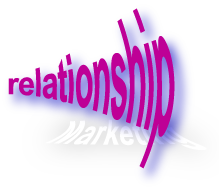 Marketing 2.0 will continue to grow, but social media campaigns will disappoint in 2011—For the last several years, “social media” has been one of the two line items (email marketing being the other) that has been growing budgets in most large brands, which have been cutting legacy marketing programs. On the client side, it will become mainstream in 2011 to hire vice presidents of social media, who will build small teams and manage agencies. However, social media results will prove illusive when marketers act like, well, marketers. Don’t expect to hear about this because it’s unflattering, but 2010 tactics will be far less effective in 2011, so firms will have to raise the bar. Salient points:
Marketing 2.0 will continue to grow, but social media campaigns will disappoint in 2011—For the last several years, “social media” has been one of the two line items (email marketing being the other) that has been growing budgets in most large brands, which have been cutting legacy marketing programs. On the client side, it will become mainstream in 2011 to hire vice presidents of social media, who will build small teams and manage agencies. However, social media results will prove illusive when marketers act like, well, marketers. Don’t expect to hear about this because it’s unflattering, but 2010 tactics will be far less effective in 2011, so firms will have to raise the bar. Salient points:
- More firms are jumping into social media, resulting in more noise and competition for scarce attention. It will be increasingly difficult to attract and hold attention using marketing and promotional tactics, which are just more media of which people have too much anyway. In most cases, the route to attention and loyalty will be showing people that you care—by listening and responding proactively. People don’t want more media, they want consideration, care and responsiveness. And it’s precisely because media is scalable that its value trends to zero. Individual attention and care, however, are harder to scale, which is why they are more valued. They generate world of mouth because they are exceptional.
- Social technologies don’t change the old adage, “You can’t please all the people, all the time.” To attract and hold attention, brands will have to prioritize, be clear whom they are serving, and focus on those people. This will require business strategy to drive content strategy and coordinated action within the team. Enterprises will discover that relationship takes time and investment, but it pays dividends. Social business strategy will be needed to create a vision, to get buy-in from relevant parties and to maintain commitment long enough to generate repeatable business results.
- Customers/stakeholders know care and consideration when they see it, and firms that conduct themselves in ways that show they care will raise stakeholder expectations of all the others. To create a word of mouth engine and hordes of advocates, firms need to focus, invest and follow through. This is a significant opportunity for firms that follow through—and a poignant threat for laggards.
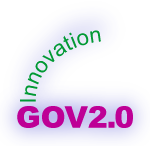 Government 2.0 will continue to pioneer social tech initiatives in select areas—In 2010, it has been refreshing to see many instances of (no, it’s not an oxymoron) government social tech leadership (of course, “Gov 2.0”). Necessity is the mother of invention: budgets everywhere are being cut, and openly cutting the level of services is political suicide. Hence, governments are discovering that social technologies can increase citizen satisfaction (because social can make decision making more inclusive and transparent) while reducing costs. Citizens can service each other online and provide very useful and relevant input to government. Several examples: Manor Labs is an initiative by a local government that crowdsources an increasing portion of its decision making to townspeople. In another case, one of my clients is a city near Washington, D.C. that is discovering that social networks can realign their relationship with their citizens by giving government a face. This echoes the “humanize the enterprise” theme that will prove increasingly pervasive in this new decade. There is considerable untapped potential, so look to see increasing government social business efforts. Elections are another visible aspect of Gov 2.0, and social technologies are proving to be change enablers, to say the least. Barack Obama should be anointed the patron saint of the political side of social networking: his decisive 2008 win stunned competitors and clearly showed the promise of social networks, thereby increasing adoption significantly. All too predictably, however, Democrats and Republicans have since showed themselves to be largely inept; they have quickly degenerated into spammers who show little personality or personal interest in their communications with people (the Obama team included). That will eventually change. Read these case studies.
Government 2.0 will continue to pioneer social tech initiatives in select areas—In 2010, it has been refreshing to see many instances of (no, it’s not an oxymoron) government social tech leadership (of course, “Gov 2.0”). Necessity is the mother of invention: budgets everywhere are being cut, and openly cutting the level of services is political suicide. Hence, governments are discovering that social technologies can increase citizen satisfaction (because social can make decision making more inclusive and transparent) while reducing costs. Citizens can service each other online and provide very useful and relevant input to government. Several examples: Manor Labs is an initiative by a local government that crowdsources an increasing portion of its decision making to townspeople. In another case, one of my clients is a city near Washington, D.C. that is discovering that social networks can realign their relationship with their citizens by giving government a face. This echoes the “humanize the enterprise” theme that will prove increasingly pervasive in this new decade. There is considerable untapped potential, so look to see increasing government social business efforts. Elections are another visible aspect of Gov 2.0, and social technologies are proving to be change enablers, to say the least. Barack Obama should be anointed the patron saint of the political side of social networking: his decisive 2008 win stunned competitors and clearly showed the promise of social networks, thereby increasing adoption significantly. All too predictably, however, Democrats and Republicans have since showed themselves to be largely inept; they have quickly degenerated into spammers who show little personality or personal interest in their communications with people (the Obama team included). That will eventually change. Read these case studies.- Empowerment is clearly assuming a political as well as a commercial dimension
 —As I write, North Africa is currently embroiled in popular revolts. Activists have used social technology tools to organize (Tunisia, Egypt, Jordan…), having followed Iran in 2009, and other activists have already scheduled revolts in Sudan and others.
—As I write, North Africa is currently embroiled in popular revolts. Activists have used social technology tools to organize (Tunisia, Egypt, Jordan…), having followed Iran in 2009, and other activists have already scheduled revolts in Sudan and others. 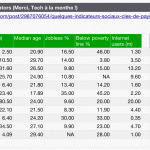 The chart, right, shows interesting correlations between unemployment and Internet access in North African countries. Although social technologies certainly didn’t cause these revolts, they are clearly serving as enablers: they have helped crowds to self-organize quickly, and governments who have used force to crack down in the past realize that they will be on YouTube instantly, which limits their use of military force. The latter is a major deterrent for countries like Egypt, which have a strategy of (at least) paying lip service to democracy; that’s why social media were less of a deterrent in Iran, which isn’t playing that game. On the commercial side, people are using social technologies to out companies or governments or people (Wikileaks is a prominent example). People are increasingly using social tools to challenge authorities of all kinds, which adds dynamism and uncertainty to the economy and society. This will continue to leach into more social contexts in 2011. It will be most destabilizing to organizations that have secrets and that are not connected with their stakeholders. Although the issue of “secrets” is complex and varies considerably with each organization, executives can use scenario envisioning to anticipate unwarranted disclosures of their secrets and prepare for the inevitable.
The chart, right, shows interesting correlations between unemployment and Internet access in North African countries. Although social technologies certainly didn’t cause these revolts, they are clearly serving as enablers: they have helped crowds to self-organize quickly, and governments who have used force to crack down in the past realize that they will be on YouTube instantly, which limits their use of military force. The latter is a major deterrent for countries like Egypt, which have a strategy of (at least) paying lip service to democracy; that’s why social media were less of a deterrent in Iran, which isn’t playing that game. On the commercial side, people are using social technologies to out companies or governments or people (Wikileaks is a prominent example). People are increasingly using social tools to challenge authorities of all kinds, which adds dynamism and uncertainty to the economy and society. This will continue to leach into more social contexts in 2011. It will be most destabilizing to organizations that have secrets and that are not connected with their stakeholders. Although the issue of “secrets” is complex and varies considerably with each organization, executives can use scenario envisioning to anticipate unwarranted disclosures of their secrets and prepare for the inevitable.  Geosocial will continue to be Web 3.0’s visible face—2010 saw two big stories in geosocial, a flavor of location-based services that uses real-time mobile technologies to broadcast one’s whereabouts and activities to one’s friends: 1) the launch of Facebook Places and 2) faster-than-expected adoption of pureplays like Foursquare. Adoption clearly shows that, for some stakeholders/ users/ members, geosocial is an idea whose time has come. Although there are several reasons for Foursquare’s success, a major tipping point was the in-workstream gaming element (users earn badges by checking into places under certain conditions). People won’t admit it, but they just love earning badges and other trinkets and showing off/outdoing their friends. We have an innate appreciation for visible tokens of accomplishment hardwired into our brains. Online forums have known this since the 1990s when they introduced badges/icons to reflect user activity, giving power users visible status. This is a key lesson in Foursquare’s success that you can apply more broadly in your social business initiatives. For another example, listen to what the City of Manor’s CIO says about gamification.
Geosocial will continue to be Web 3.0’s visible face—2010 saw two big stories in geosocial, a flavor of location-based services that uses real-time mobile technologies to broadcast one’s whereabouts and activities to one’s friends: 1) the launch of Facebook Places and 2) faster-than-expected adoption of pureplays like Foursquare. Adoption clearly shows that, for some stakeholders/ users/ members, geosocial is an idea whose time has come. Although there are several reasons for Foursquare’s success, a major tipping point was the in-workstream gaming element (users earn badges by checking into places under certain conditions). People won’t admit it, but they just love earning badges and other trinkets and showing off/outdoing their friends. We have an innate appreciation for visible tokens of accomplishment hardwired into our brains. Online forums have known this since the 1990s when they introduced badges/icons to reflect user activity, giving power users visible status. This is a key lesson in Foursquare’s success that you can apply more broadly in your social business initiatives. For another example, listen to what the City of Manor’s CIO says about gamification.- Social business will be increasingly mentioned in 2011, but few firms have the capability to do it—Enterprise adoption of social business—using social technologies to transform business—was only a concept in 2010, and 2011 will see slow pockets of development. For most organizations, using social technologies has been child’s play imbued with few business-relevant metrics and pie-in-the-sky expectations (see Web 2.0 Adoption Curve, 2009-2015). In 2010, I witnessed numerous instances of “respected” leaders of PR firms talking about meaningless “metrics” that were largely based on vapid numbers with no stated business connection. That immaturity is changing; intent, focus and strategy receive more attention today and will grow in 2011-2012. CSRA’s 2010 client work was pregnant with the realization that “engagement” was a marathon, and social technologies required considerable finesse to use well enough to get results. Refreshingly, results proved very predictable when groups of people stopped acting like marketing functionaries and started being themselves (people) and treating people as people, not “consumers.” Most organizations do not yet have the skills to think about transforming their businesses in 2011, but once they master the social business skills, they will start transforming their business processes. For most pioneers, this won’t become a reality until 2012-2015.
- Social actions and Internet advertising—Facebook is literally built around “social
 actions,” which are transactions that occur within a social context. transform all Internet advertising, but people don’t realize it yet. In 2010, Facebook introduced a new social action, the ability to “remove” ads from your screen (yes, I know they reappear, but realize that you are educating Facebook’s algos every time you click; they have a business to run, so they don’t permanently remove the ads, but they will when it makes sense). This “option” will prove to reset the bar for all advertising because it plants the expectation that, not only can you make that ad disappear, you can give the reason. If marketers truly care about the people with whom they are trying to communicate and influence, they will appreciate that feedback and use it to focus their efforts better. I already want the ability to remove ads from everywhere. I do wish Facebook would give us more ways to indicate approval of ads. They have several reasons for removing an ad but only one way to indicate approval (“like”). But that will change. Facebook is paving the way; their ads are smaller AND you can “remove” them; I would implement that on EVERY site with advertising, even if it’s like thermostats in corporate offices (80% of them aren’t even wired; they are there to give employees the illusion of control). I can’t speak for Facebook, but the very suggestion that users can “remove” ads is brilliant; I predict all ads will have that feature within the next 5 years, depending on user/reader demographics. If your brand uses online ads, begin experimenting with this feature in 2011. Work with your viewers, not against them.
actions,” which are transactions that occur within a social context. transform all Internet advertising, but people don’t realize it yet. In 2010, Facebook introduced a new social action, the ability to “remove” ads from your screen (yes, I know they reappear, but realize that you are educating Facebook’s algos every time you click; they have a business to run, so they don’t permanently remove the ads, but they will when it makes sense). This “option” will prove to reset the bar for all advertising because it plants the expectation that, not only can you make that ad disappear, you can give the reason. If marketers truly care about the people with whom they are trying to communicate and influence, they will appreciate that feedback and use it to focus their efforts better. I already want the ability to remove ads from everywhere. I do wish Facebook would give us more ways to indicate approval of ads. They have several reasons for removing an ad but only one way to indicate approval (“like”). But that will change. Facebook is paving the way; their ads are smaller AND you can “remove” them; I would implement that on EVERY site with advertising, even if it’s like thermostats in corporate offices (80% of them aren’t even wired; they are there to give employees the illusion of control). I can’t speak for Facebook, but the very suggestion that users can “remove” ads is brilliant; I predict all ads will have that feature within the next 5 years, depending on user/reader demographics. If your brand uses online ads, begin experimenting with this feature in 2011. Work with your viewers, not against them. - Social business models and tactics—In 2010’s predictions, I anticipated the increased use of four models, which saw increased case studies in 2010. Good news, none of them are anywhere near being tapped, so most commercial and government enterprises can still pioneer in 2011:
 Crowdsourcing—is by far the most popular. Here you ask the crowd for input or advice on important questions, usually in a social network, so participants can vet responses, which drives up quality and cred. Most executives don’t understand the dynamics of transparent forums, so they underestimate the power of crowdsourcing, which has three axes: 1) quality is high due to the diversity of responses and the crowd’s evaluation of them; 2) crowdsourcing increases engagement because people feel honored that you are asking their opinions; 3) it is fast and inexpensive. You cannot afford to not do it because you will be harmed by competitors who do. It is not complicated, but you need to develop expertise and approach to how to ask, manage venues and follow up to maximize value. Read Manor Labs’ case study and others.
Crowdsourcing—is by far the most popular. Here you ask the crowd for input or advice on important questions, usually in a social network, so participants can vet responses, which drives up quality and cred. Most executives don’t understand the dynamics of transparent forums, so they underestimate the power of crowdsourcing, which has three axes: 1) quality is high due to the diversity of responses and the crowd’s evaluation of them; 2) crowdsourcing increases engagement because people feel honored that you are asking their opinions; 3) it is fast and inexpensive. You cannot afford to not do it because you will be harmed by competitors who do. It is not complicated, but you need to develop expertise and approach to how to ask, manage venues and follow up to maximize value. Read Manor Labs’ case study and others.- Gaming and virtual worlds are still on the ascent, and their application is virtually limitless. Executives need to be on Foursquare, if for no other reason than to understand how to use location and gaming to motivate groups of people and increase their excitement, satisfaction and activity. The gaming element is widely transferable to social initiatives. Manor Labs case study also illustrates this. Virtual worlds have ironclad case studies for certain use cases, too. IBM, for example, saves millions per year on collaboration costs by holding events in virtual worlds. In another case, Weopia’s CEO, Dave Wilkie, told me at #snc2011 that their clients have doubled their success rates by having in-world “pre-dates” because in-world interaction can suggest body language, thereby providing some “gut feel” about a person. This corroborates IBM’s findings when holding conferences in virtual worlds, which give participants a real feeling of “being there” even though they’re at their desks, sans flights, hotels and ground transportation. Look at your organization. What if it were true? It could be transformational and have a major impact on your bottom line.
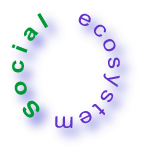 CommCo—is my term for “the Threadless model,” (community company). Here, the company serves as an enabler for its online community, whose members design products and decide which products are made into physical goods (if applicable). I’ve long predicted that CommCo would become widespread for consumer products in general. I’m talking cosmetics, mustard, beer, apparel, bicycles, tech gadgets, cars. By giving customers a role in designing products or services, you give them a chance to give of themselves, which increases engagement tremendously, for participants and their families, friends and digital social networks. Remember, even if only nine participants out of 100 contribute (the average), the others will participate vicariously. Their engagement will increase because they know they could create if they wanted to. Several case studies here. For one, HGTV created a multimillion dollar business at ultra low cost by using CommCo to pilot the concept.
CommCo—is my term for “the Threadless model,” (community company). Here, the company serves as an enabler for its online community, whose members design products and decide which products are made into physical goods (if applicable). I’ve long predicted that CommCo would become widespread for consumer products in general. I’m talking cosmetics, mustard, beer, apparel, bicycles, tech gadgets, cars. By giving customers a role in designing products or services, you give them a chance to give of themselves, which increases engagement tremendously, for participants and their families, friends and digital social networks. Remember, even if only nine participants out of 100 contribute (the average), the others will participate vicariously. Their engagement will increase because they know they could create if they wanted to. Several case studies here. For one, HGTV created a multimillion dollar business at ultra low cost by using CommCo to pilot the concept.- ProAm—has professionals and amateurs working together, and it’s an excellent example of understanding core competency as the basis for collaboration. Amateurs supply passion, out-of-the-box ideas and time while professionals magnify their expertise by collaborating with amateurs. Remember, everyone is an amateur of several things and an expert in a couple things, and your enterprise can unlock the value by inviting amateurs to contribute. Quality is high and cost is low. The Pro-Am model will be prominent in continuous innovation. Read this NASA example.
- Sociology will be the competency of the next 20 years—hire or engage people with sociology backgrounds to form a cornerstone of your social initiatives. The I.T. phase of the digital transformation is largely over. For the last 25 years, “I.T.” has enabled and constrained our use of digital tools, but tools and even access are becoming free. Generally speaking, “marketing” by pushing content to people has fossilized, and its ROI will never recover. Marketers will add more value when they focus on using their research skills to learn how to serve people better because people will do the talking. However, the new fulcrum is understanding group dynamics, how the individual affects and is affected by the group. To get this, read Robin Dunbar.
2011 Recommendations
 My 2011 recommendations for enterprises and executives echo last year’s. With respect to adoption of social technologies, we are very much on the trajectory I described in 2006, 2007, 2008, 2009 and 2010; however, there are more facts and details about how to realize the vision, some of which I will share to help you get more clarity on how to use the insights to improve your competitiveness.
My 2011 recommendations for enterprises and executives echo last year’s. With respect to adoption of social technologies, we are very much on the trajectory I described in 2006, 2007, 2008, 2009 and 2010; however, there are more facts and details about how to realize the vision, some of which I will share to help you get more clarity on how to use the insights to improve your competitiveness.
Enterprise
- Get to know your ecosystem and how you can interact with it most effectively. This sounds elementary, but I have yet to meet an organization that knows its stakeholders’ preferred venues, workstreams and networks in sufficient breadth and depth from which to create sound strategy. Millions of conversations are taking place in an ecosystem around you, and you need to understand what digital venues are most influential. You also have to look at your organization, honestly, and develop a vision for what value you can bring to these conversations and venues (hint, it’s probably not your products and services). You need concrete answers for:
- What are stakeholders (customers, investors, regulators, employees, partners, alumni…) doing in digital social venues?
- Why are they there, what are they trying to do?
- Which venues do they use, how do they use each venue and why?
- How are they engaging with each other, competitors and other players in these venues?
- Based on your culture, core competencies and business goals, what do you have to give your ecosystem that is valuable and unusual? (this gives you authority)
- Only when you know this will you be able to engage efficiently and effectively; most organizations are ineffective because they shoot from the hip and just talk.
- Develop resident skills with digital social technologies, processes and behaviors.
 This is a strategic imperative because stakeholders will increasingly expect you to interact how they want to interact. Social technologies moved the cheese of one of my clients, who sends reams of paper and digital newsletters to customers. But Gen Y respondents told us flat out, “If you’re not on Facebook on the iPhone, we won’t talk.” If you want to be available, you have to go to where stakeholders are. And don’t assume it’s Facebook or Twitter: B2B companies are especially in the dark about where their customers are online. Keep in mind, social venues are all about social behavior, not technology that you can buy and put in place; your people will need time to learn how to act, and that’s a process you need to pursue urgently.
This is a strategic imperative because stakeholders will increasingly expect you to interact how they want to interact. Social technologies moved the cheese of one of my clients, who sends reams of paper and digital newsletters to customers. But Gen Y respondents told us flat out, “If you’re not on Facebook on the iPhone, we won’t talk.” If you want to be available, you have to go to where stakeholders are. And don’t assume it’s Facebook or Twitter: B2B companies are especially in the dark about where their customers are online. Keep in mind, social venues are all about social behavior, not technology that you can buy and put in place; your people will need time to learn how to act, and that’s a process you need to pursue urgently.
- Blogging is about what you think and creating a network around yourself, not about selling. Leave the latter for your website. No matter what your business is, you have to share your thoughts online. Energize your network by engaging relevant bloggers by commenting on their blogs. Most blogs should comment more than they post.
- Experiment with geosocial pilots; you need to understand Web 3.0 and how your stakeholders can use mobile technology and social actions to create value for themselves. Why shouldn’t you position yourself as a leader in helping them?
- Gaming doesn’t mean what most execs assume—spending zombiesque hours in front of some console. Everybody likes to play (golf, day trading, bridge), in business and social contexts, and it’s a fantastic motivator. It will become the new work, so you can create fantastic advantage for yourself by understanding this earlier rather than later.
- Contribute to online forums frequented by stakeholders. This might be LinkedIn Answers, industry forums, prominent blogs, trade journal or mainstream media comments, wherever stakeholders are asking questions and solving problems.
- Deploy social business infrastructure internally to drive skill development and increase productivity; kick off pilots in which teams use wikis, blogs, microblogging, social bookmarking and rich media.
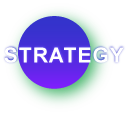 Assign a top executive to manage your adoption of social business because changing stakeholders’ expectations will change your business. Your only choice is how do you want to participate: if you don’t get involved and lead, others will set the table for you—to their advantage.
Assign a top executive to manage your adoption of social business because changing stakeholders’ expectations will change your business. Your only choice is how do you want to participate: if you don’t get involved and lead, others will set the table for you—to their advantage.
- Develop a social business strategy to articulate your approach by considering risks, rewards and business strategy. It lays out goals, timelines and resource requirements; metrics and measurements. Your availability to interact with stakeholders will increasingly drive your brand value because they will expect you to be present, appropriate and sincere. Your company, employees and proxies need to learn how to do that. It’s hard work, so the earlier you get started…
- The strategy will enable you to create a strategic dialog among management; in 2011 and 2012, executives are going to be doing remediation because social projects are happening all over the enterprise, in some cases counteracting each other. I’m not advocating centralization and controlling message, but having goals and meeting them collaboratively will significantly increase returns.
- Hold focused conversations within the organization and with partners and people outside. You need an adoption approach that considers the spectrum of risks and focuses your efforts on rewards that move your business strategy.
- This executive should have experience leading innovation initiatives that break rules and ruffle feathers. S/He should also be open to personally embracing social practices (i.e. blogging, tweeting, interacting online).
- Create and maintain a relationship-centric ethos for your social initiatives. During the Industrial Economy, all of us forfeited our humanity to serve the machine, which created unprecedented value. Digital social technologies are enabling us to create and scale our human communications, which will “humanize the enterprise.” Your organization can get in front of this, so you are leading, not complying after the fact. See the Social Network Life Cycle Model and the Relationship Life Cycle for more on this.
Individual
 Start blogging. There, I said it once more. It’s the easiest way to differentiate yourself. Two of my largest clients last year came through people finding my blog posts and videos online. Here is my free Quick Launch Guide to get on in about an hour.
Start blogging. There, I said it once more. It’s the easiest way to differentiate yourself. Two of my largest clients last year came through people finding my blog posts and videos online. Here is my free Quick Launch Guide to get on in about an hour.- Don’t treat LinkedIn as a website, but as an engagement platform. People go to LinkedIn when they are looking for expertise, but “content” engages far less than interaction. You can pay for content, but your attention is priceless. On LinkedIn, this means:
- Participating in LinkedIn Answers: answer others’ questions and ask questions; this attracts attention
- Focusing on highly targeted Groups: interact there regularly; commit to 2-3 groups
- Using Polls to have fun and attract attention to issues relevant to you and people you want to engage
- Putting your slides on your profile via LinkedIn’s Slideshare app
- Invoking your blog posts from your profile with the WordPress or BlogLink Apps
- Are you courting clients on other continents? Recreate your profile in other languages.
- Start tweeting. Twitter is a new mode of communication that you need to understand because it is transforming communication and creating new kinds of relationships. See Twitter: Key Disruptive Innovation of the Decade.
- Cut back on unproductive networking. Don’t fall into networking as an activity trap. If you drive half an hour to an event and spend 3 hours there, that’s half a day. You could have written six blog posts and answered four LinkedIn questions. When you have a content strategy for your blog, it creates digital breadcrumbs that are always working for you. If you choose the LinkedIn questions you answer judiciously, people will discover them at any time. At face-to-face networking events, the value dissipates much more quickly. I’m not saying to reduce face-to-face significantly, but cutting back on two events per month will give you more than enough time to ramp up online, where the leverage is far greater. Optimize.
- Relentlessly conduct yourself so that you increase trust with people who count. Make introductions, answer questions, give help, ask for help, follow through on what you promise. In digital social environments, other people are observing our interactions. We can choose to be creeped out by that, or use it to our advantage. When you are authentic and help people, other people see. Huge leverage.
- Experiment with video. If you have a family member or friend who has some video skills, make a couple short videos of yourself talking about something your stakeholders are worried or excited about. Start by creating two or three slides, talking through them and recording a voiceover. Stand up and present it. Then go for the video. It’s forever. Don’t neglect keywords and tags when you post to YouTube. Ask around, it’s not rocket science.
- Get on Foursquare, Facebook Places or another geosocial app. You need to understand Web 3.0, and it doesn’t take much time. Don’t let it happen to you.
- Carpe diem!

Mike,
What a great article and very insightful, timely observations. Although I am not the strongest person I know in the social media arena, I believe in it 150%. I also have been saying for the past few years that people need to reinvent themselves if they hope to continue to achieve and excel in the future. As Daniel Pink so aptly pointed out in his book “A Whole New Mind” we are in the aggregation age and you must use the right side of your brain to be successful. Pioneers like Rob Slee have seen these changes coming for quite some time and have sounded the alarms. Unfortunately, human nature is resistant to change. We tend to want to “wait out” the changes we need to make and hope that the world will once again conform to us. That includes social media, the way you approach potential clients and even the manner in which we view ourselves. We are in exciting yet frightening times. We must embrace change and growth or be passed by. The days of winning by being the most technically proficient alone are gone. I embrace a global business environment and see that as increased opportunities to grow, change and earn. In deed, carpe diem!